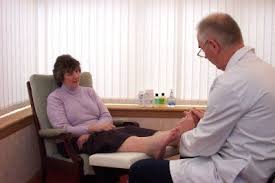 Reflexology, also called zone therapy, comes under the heading of alternative medicine. It involves the practice of massaging, squeezing or pushing parts of the feet, hands or abdomen with the goal of affecting other parts of the body. Interestingly, although reflexology has been classified as an alternative medicine approach, there is no consensus among practitioners (reflexologist) on how the practice is supposed to work.
Reflexology, also called zone therapy, comes under the heading of alternative medicine. It involves the practice of massaging, squeezing or pushing parts of the feet, hands or abdomen with the goal of affecting other parts of the body. Interestingly, although reflexology has been classified as an alternative medicine approach, there is no consensus among practitioners (reflexologist) on how the practice is supposed to work.
There does appear to be a unifying theme or idea that areas of the feet and hands correspond to different areas of the body. The theory is that by manipulating these areas the reflexologist can make significant changes in a specific organ system or in an individual’s overall health. However, concerns have been raised by medical professionals because of the difficulty developing scientific evidence that reflexology has any beneficial effect. Doctors are concerned that treating potentially serious illnesses could delay seeking appropriate medical treatment.
The ideas behind reflexology are not new. It was practiced in the Egyptian culture as early as 2330 B.C. The practice, as we know it today, was first researched and developed by Eunice Ingham. Her first work was published in 1938, and since 1942 workshops have been given around the world.
The Ingham method of reflexology is a combination of the work of the late Eunice Ingham and Dwight Byers. And, different from other methods of reflexology, the Ingham method is used primarily for relaxing tension. Practitioners of this method of reflexology and physicians alike agree that over 75% of our health problems can be linked to stress and tension. This method of reflexology is used to improve nerve and blood supply and nurture stress relief.
Reflexology is an alternative medical treatment that has no known side effects when done appropriately. An aggressive practitioner may cause sore feet, but otherwise the practice is fairly harmless. Practitioners also believe that it will not make any condition more acute but rather should be used in conjunction with other alternative methods or traditional medicine in order to help the body heal faster.
Although there are practitioners who operate outside the guidelines set by the Reflexology Association of America, there was a certification board that was established in 1994 to pursue the dream of the National Association. In 1995, the Reflexology Association of America was officially founded and pledged, “to work together in unity while embracing our diversity, do results to combine our efforts for the professional development of the field of reflexology”.
 The association believes that the practice of reflexology is a stand-alone profession and should remain separate as well as being service-oriented and dedicated to providing accurate reliable information to the public. They endorse professional standards and ethics as well as integrity, honesty and dignity.
The association believes that the practice of reflexology is a stand-alone profession and should remain separate as well as being service-oriented and dedicated to providing accurate reliable information to the public. They endorse professional standards and ethics as well as integrity, honesty and dignity.
Any research published by the organization reflects either pain control or nausea control which is also related to decreasing stress and tension in the body. Many proponents claim that it can cleanse the body of toxins, increase circulation and assist in weight loss. Others have reported success in treating anything from hair loss to cardiac disease or rectal prolapse. One practitioner even claims to have lengthened the leg that was an inch shorter than the other. However, other than changes to the body related to decreasing stress and tension, there has been no clinical proof to show that reflexology is able to make significant changes or improvements in any specific diagnoses.
At this time no formal training is required to practice reflexology or call oneself a reflexologist. There are some courses which are accredited for continuing education for nurses and massage therapists and the International Institute of Reflexology, run by Dwight Byers, offers certification after 200 hours of instruction plus written and practical testing. However, the certification process has neither legal nor medical recognition at this time. The International Institute of Reflexology states: “. . . wishes to make it perfectly clear that it does not purport to teach medical practice in any form; or is the Ingham Method of Reflexology intended to replace conventional medical treatment.”
The bottom line is that reflexology continues to work on theory without any clinical or scientific proof that it offers positive changes in an individual’s overall health, aside from decreasing stress and tension. Unfortunately, to get a great foot massage it can cost anywhere between $35 and $100 per session. Claims that reflexology may be effective for diagnosing or treating diseases must be ignored because they can lead to the delay of necessary medical care or unnecessary testing of individuals who were worried about findings found by a reflexologist.
Resources:
Reflexology Association of America
http://www.reflexology-usa.org/
Health & Wellbeing: All You Need to Know about Reflexology
http://health.ninemsn.com/naturaltherapies/naturalhealth/8303169/all-you-need-to-know-about-reflexology
Branch Reflexology: Caring for the Body by Tending to the Feet
http://www.branchreflexology.com/What_Is_Reflexology.html
All Reflexology
http://www.allreflexology.com/
Irish Reflexologists Institute
http://www.reflexology.ie/
Sole Revival Reflexology
http://www.srreflexology.com/All-About-Reflexology.html
Reflexology Research Projects
http://www.reflexology-research.com/
University of Minnesota: reflexology
http://takingcharge.csh.umn.edu/explore-healing-practices/reflexology


Leave a Reply